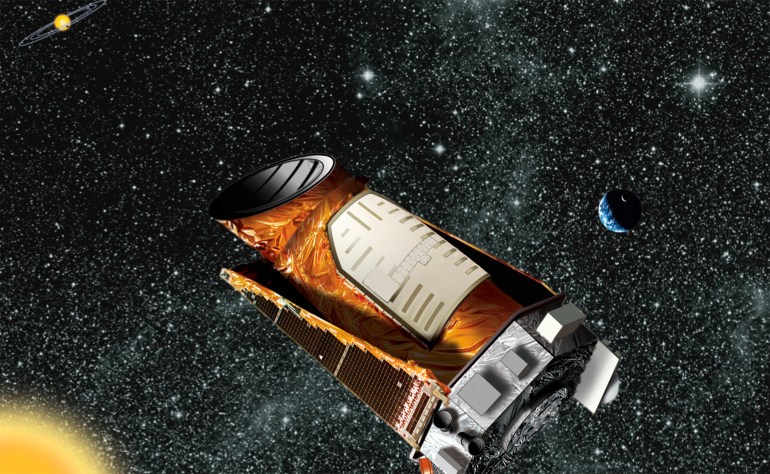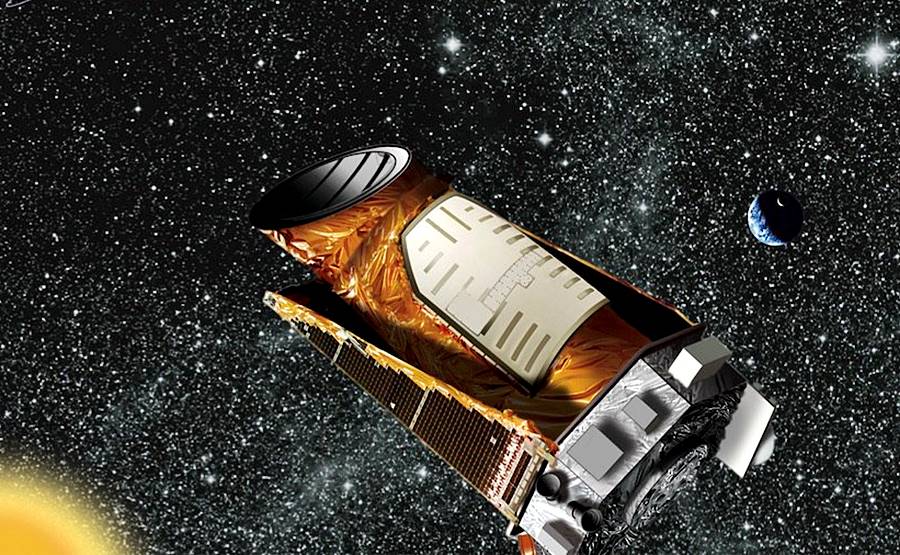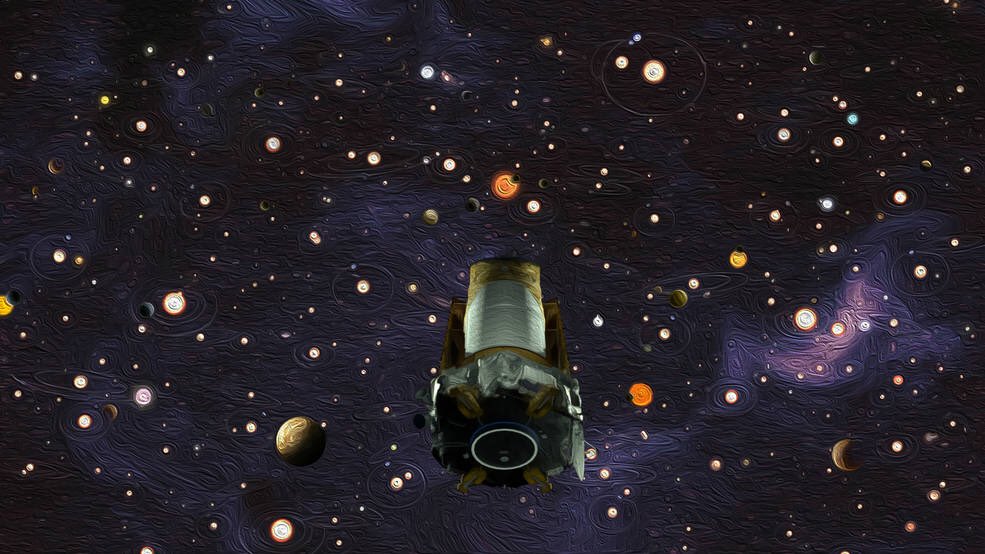Sat 28 August 2021:
When NASA’s Kepler telescope looked into space, it was also looking back in time.
Locked into a heliocentric orbit, Kepler was set to gradually trail the Earth giving the telescope a unique view of the universe.
“The light we were seeing had actually left that star a billion years ago,” Patrick Armstrong, a PhD student at the Australian National University and the lead author of a study published this month in the Monthly Notices of the Royal Astronomical Society told Al Jazeera.
He adds that scientists were lucky Kepler was looking in that direction at that exact moment. While stars live for billions of years, they often die in a matter of weeks, with the actual explosion and shockwave themselves visible only for a matter of days.
The ground-breaking data from Kepler comes three years after the telescope was decommissioned in 2018 when it ran out of fuel after nine years in operation.
Precision photometry
If Kepler had a superpower, however, it was its ability to measure the brightness of a star to a tiny fraction of a percent – it was equipped with precision photometry to allow it to track the tiny dimming in a star’s glare caused by the passing of a planet in front of it.
And having it stare at single patches of space for long periods provided the happy bonus of unlocking a vast trove of other cosmic treasures – including historically hard to track phenomena like supernovae, which pop rapidly in and out of view.
Brad Tucker, one of the co-authors of the study and Armstrong’s supervisor at ANU, has been poring over what Kepler sent back since 2013.
“A star explodes about every 100 years in your average galaxy, and Kepler allowed us to stack the deck by being able to monitor tens of thousands of galaxies,” said Tucker, adding that he is confident the telescope still has much to offer, with new research on supernovae based on Kepler data likely to be published even in the coming months.

The supernova data is unprecedented, the first to offer a clear view of the progression of the shockwave that travels through a star at the end of its life – beginning with the earliest moments of the explosion.
As part of the Kepler 2 survey, the telescope was trained on a single patch of sky for about 80 days. Every 30 minutes it took a picture of what it saw. In contrast, a ground-based telescope would only have been able to make observations at night.
“The difference between looking through a ground-based telescope and Kepler is the difference between looking at a slideshow and watching a movie,” Armstrong explained, adding, “So we were really excited by the high quality of the data we were seeing.”
Armstrong and his team used the data to test multiple models and examined the “shock cooling light curve” which measured the change in the amount of light emitted by the supernova over time.
“We usually don’t capture a supernova until a few days or even a few weeks afterwards – it’s still rare to see those initial moments,” said Tucker. “Now we know which model to use, and so we can improve the use of all those other observations of supernovae we have to understand other stars as well.”
From BANG to fizz, astronomers have caught the first moments of a supernova!https://t.co/GLxBmRK2xW#SpaceAustralia pic.twitter.com/snv6YU7ZmJ
— SpaceAustralia.com (@SpaceAusDotCom) August 12, 2021
Answering the big questions
Studying a supernova can reveal many details about a star, including its size and composition. The explosion itself creates a primordial soup of protons and neutrons and can eventually lead to the birth of new planets and stars.
However, researchers are also intrigued by supernovae because studying them helps answer some of the big questions about the universe.
Armstrong explains that analysing the light of specific kinds of supernovae can allow researchers to identify how fast the universe is expanding and accelerating. “All of this ties into our understanding of where the universe came from and what it’s made of and things like that,” he said.
An artist’s conception of the Kepler space telescope is shown in this illustration provided by NASA [NASA Handout Photo via Reuters]
While Kepler’s mission was primarily statistical – to discover whether Earth-size exoplanets were common – TESS is designed to identify specific exoplanet systems that should be examined further.
Tucker explains that TESS just sees more volume and that by delivering more observations than Kepler, TESS will feel like going from a 1080p display to a 4k one. Such tools make this an exciting time for astronomy, the researchers say.
“We’re starting to literally see the universe in a way we never did before,” said Tucker. “We had this view that the universe is a somewhat static place with lots of things not changing or things just lasting billions of years, but the more we look, the more we realise just how dynamic and evolving our universe really is.”
_____________________________________________________________________________
FOLLOW INDEPENDENT PRESS:
TWITTER (CLICK HERE)
https://twitter.com/IpIndependent
FACEBOOK (CLICK HERE)
https://web.facebook.com/ipindependent
Think your friends would be interested? Share this story!








